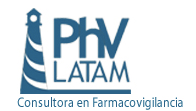EMA, the European Medicines Agency, (previously called EMEA) is a European Union agency for the regulation and control of medicinal products. It was established in 1995 with funding from the European Union and the pharmaceutical industry, as well as indirect subsidy from member states. Its main aim is to harmonise (not replace) the work of existing national medicine regulatory bodies. It is based in London.
A very important achievement of EMA is the establishment of the centralized procedure for registration of medicinal products, meaning that only one single application has to be submitted via this central entity, instead of one for each country of interest.
This centralized registration allows marketing authorization valid in all EU and European Economic Area (EEA)-European Free Trade Association (EFTA) states (Iceland, Liechtenstein and Norway). The centralised procedure is obligatory for all drug products derived from biotechnology and other high-tech processes, as well as for human medicines for the treatment of HIV/AIDS, cancer, diabetes, neurodegenerative diseases, auto-immune and other immune dysfunctions, and viral diseases, and for veterinary medicines for use for growth or yield enhancers. It is also open to products that bring a significant therapeutic, scientific or technical innovation, or is in any other respect in the interest of patient or animal health.
Apart from the importance of this health authority in the EU and all its member states, is relevant to regulatory affairs in other countries around the world because:
- Many pharmaceutical products, especially biotechs and other that require high-tech processing of manufacturing, are produced in the EU. Some of the member states like Germany, France, Italy and the UK have some of the most important pharmaceutical industries in the world.
- Many countries require products to be registered and/or marketed in a “high sanitary-surveillance” country to be considered for the local market, sometimes as an absolute condition, and in other cases for expedite revision process. EMA in some cases, and individual member countries in others, are considered “high sanitary-surveillance” domains. To proof that a product is actually registered and/or marketed in a country, there is a document called CPP (Certificate of Pharmaceutical Product) that is to be requested to the health authority.
- Many countries (such as Mexico and Turkey) accept foreign GMP certificates if they are issued by “high sanitary-surveillance” health authorities, like EMA or some of its member states.
- Many health authorities tend to mirror EMA sanitary decisions, such as the market recall of a drug product or the addition of a special warning in the labeling text.
- EMA, together with the FDA and the Japanese regulatory health authority, conform the ICH, International Conference on Harmonisation of Technical Requirements for Registration of Pharmaceuticals for Human Use. This entity issued a series of guidelines on quality, efficacy, safety and other aspects of pharmaceutical products that are now standards accepted or adopted by many countries around the world.





